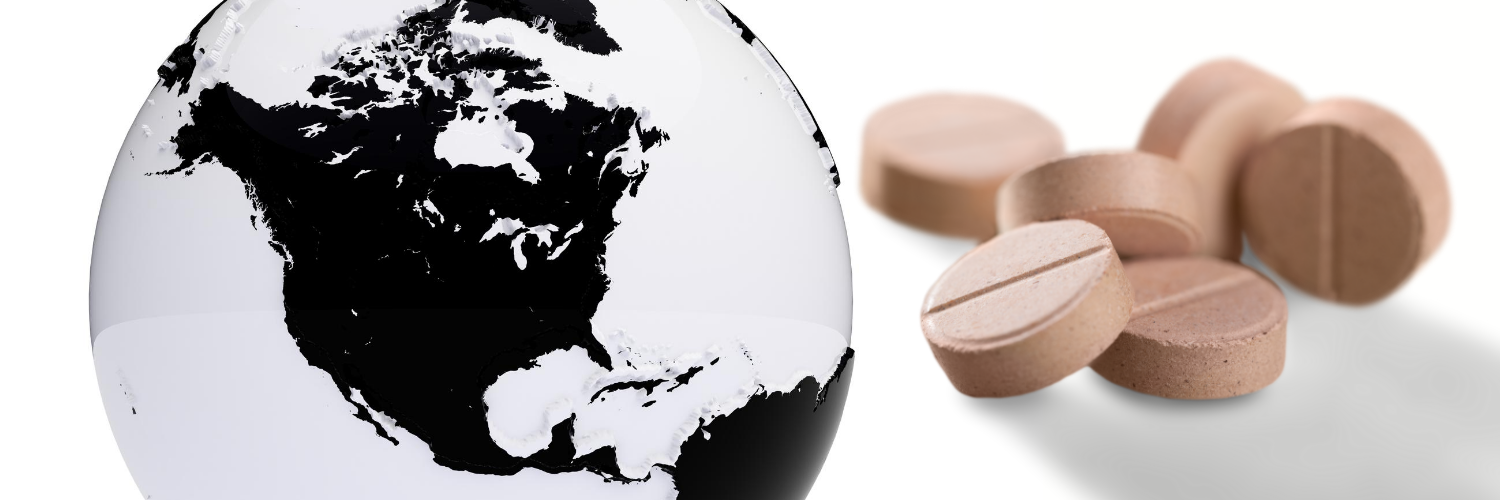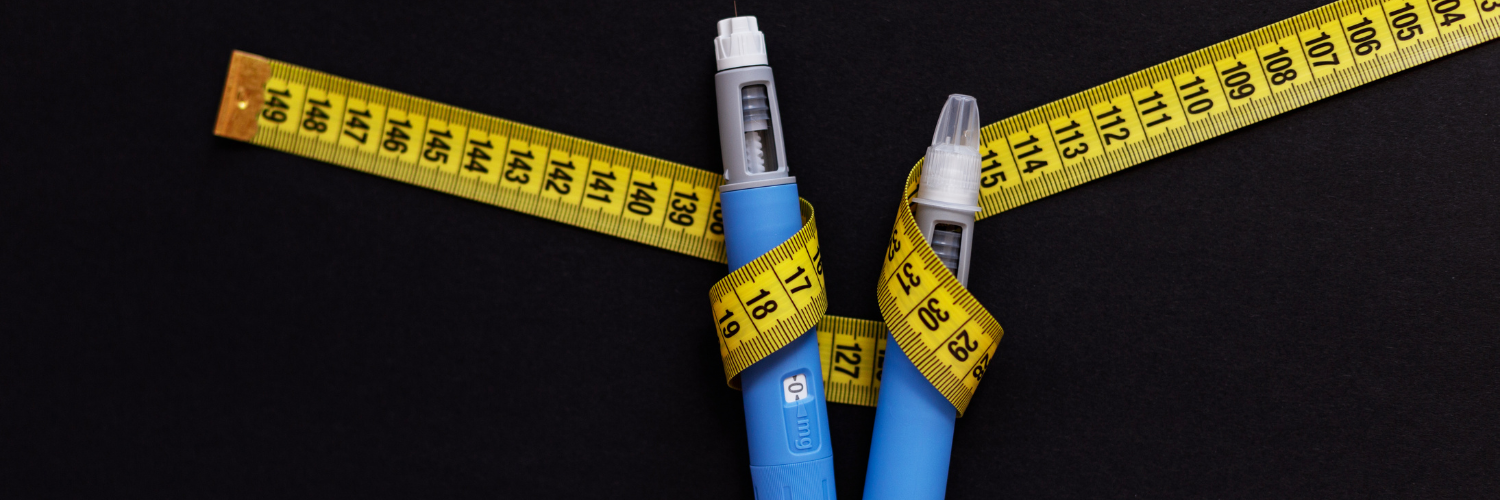Pharmaceutical Companies Don’t Manufacture Most of Your Drugs in the United States

Why We Wrote the Report Not Made in the USA
Yesterday, PharmacyChecker published a report called Not Made in the USA: The Global Pharmaceutical Supply Chain and Prospects for Safe Drug Importation. The report was the product of two years of research and writing on the topic of where prescription drugs sold in the U.S. are actually made, their safety and prices — and related public policy issues. Why that report came to be is a story in itself, summarized below in the preface of the report.
Preface
I want to explain to the reader how it came to be that our little company, PharmacyChecker, set out on this ambitious project to research the manufacturing locations of prescription drugs sold in the U.S., which is a primary focus of “Not Made in the USA.” You may have guessed from the title that most prescription drugs behind U.S. pharmacy counters are not made in the United States. Where drugs are made matters for many reasons, but we came to this issue initially because the prices for the same drugs sold here are much lower in other countries.
In America, millions of patients have gone without filling a prescription because they could not afford it. It’s sad and unnecessary. We know that many patients have benefited from personally importing lower-cost prescription drugs. Importing medication has been a staple of prescription drug savings for decades in the United States, and yet the laws and regulations often place this practice in a legal gray area, unnecessarily curtailing access. It’s my hope that this report will bring greater clarity to what needs to be done to improve the situation.
As we “go to print” on this report, we are hopeful that drafted provisions to lower drug prices, such as out-of-pocket spending caps for Medicare enrollees, inflation-based limits on drug price increases, a $35 monthly copay limit across insurers for insulin products, and Medicare negotiating prices on single-source brand-name drugs, become reality through passage of the Build Back Better Act. These provisions, while a great step forward, will not effectively help tens of millions of Americans for years to come because the pharmaceutical industry was able to stave off the larger policy lifts proposed in the Elijah E. Cummings Lower Drug Costs Now Act. As a result, importation as a means to lower prices is potentially more important than ever. The pharmaceutical industry has spent tens, if not hundreds of millions of dollars over the past two decades on lobbying, funding “non-profit” organizations, and running PR campaigns to create a false narrative that imported drugs are inherently not safe or counterfeit. It’s time to end once and for all their scare tactics, show why they are so afraid of safe drug importation, and finally implement tangible solutions to lower patients’ medication bills. That starts by showing unequivocally, with specificity, that many of the most expensive prescription drugs sold in the U.S. are already imported.
Lack of access to affordable prescription drugs in the United States is not a new public health crisis. At the beginning of this century, Americans, most of them over the age of 65, began turning to the Internet, Canada, and other countries, in their search for more affordable medicines. In the fall of 2002, Tod Cooperman, MD, a nationally recognized consumer healthcare expert (and founder of ConsumerLab.com), asked me if I wanted to join him in starting a company to provide information for such patient-consumers, to help them make an informed choice when purchasing medicine online for themselves and their families. So, in 2002, PharmacyChecker began verifying the safety credentials of online pharmacies and comparing their drug prices, opening our virtual doors in April of 2003, with a niche in international pharmacy verification and safety and drug pricing. Today, PharmacyChecker fills a critical need for Americans who seek affordable prescription medications, whether through local coupons for U.S. pharmacy savings or international mail order savings, providing them with information that protects their health and safety on the Internet. Unfortunately, the pharmaceutical industry continually misinforms the public that buying “foreign drugs” is not safe. “Not Made in the USA” shows that most of the drugs sold in U.S. pharmacies are “foreign drugs.”
In 2003, a couple of weeks before PharmacyChecker launched its website, a story in the Wall Street Journal, entitled “Drug Companies Cry 'Danger' Over Imports,” reported that the lobbying group Pharmaceutical Researchers and Manufacturers of America (PhRMA) hired the public relations firm Edelman to create strategies to deter Americans from buying lower cost medicines in Canada. Using focus groups, PhRMA learned that the most effective public communications plan would use fear. Scare Americans by invoking the specter of counterfeit drugs coming from Canada. As I’ve experienced it, since that time, PhRMA has put on a master class in implementing such a strategy. Through organizations and programs funded by drug companies, such as Partnership for Safe Medicines (PSM), Alliance for Safe Online Pharmacies (ASOP), and programs of the National Association of Boards of Pharmacy (NABP), as I see it, the pharmaceutical industry has shaped the views of mainstream media on the left and the right. PhRMA’s disinformation campaign has thus made media misinformation rampant when it comes to the topic of prescription drug importation and Americans buying lower cost medicines over the Internet for their own use. (That issue is a book unto itself.) In the meantime, it got us to look very closely at the drug packaging of prescriptions sold in U.S. pharmacies and to the crux of this paper.
I’m politically liberal and inclined to be on the side of implementing more regulations dedicated to protecting public health. For that reason, it’s jarring to report how much the U.S. Food and Drug Administration seems to operate as an arm of the industry on the issue of drug importation. The FDA’s communications essentially work to inform patient-consumers and the public at large that personal imports of less expensive drugs from pharmacies located in Canada and other countries are unsafe, and, under most circumstances, technically illegal. It employs a more official sounding version of the communications strategy PhRMA came up with in 2003.
The thing is that buying medicines from pharmacies in Canada, and many other countries, is not inherently unsafe, and the law is quite flexible to allow it. That’s the truth. And it’s equally true that buying medicines from foreign countries, especially online, can be dangerous. While millions of Americans have safely filled prescription orders using international online pharmacies, way too many have ordered from dangerous, rogue websites. There’s a middle ground on this issue. It has to do with patient-focused guidance on how to find the safest online pharmacies and avoid dangerous websites. I believe that the FDA must already understand the benefits of safe personal drug importation: they know that Americans in many instances are buying the exact same drugs sold here — or safe foreign versions of those drugs — but at lower prices. Moreover, the law allows the FDA to permit personal importation of prescription drugs. I believe that for those reasons (and perhaps due to basic notions of justice and fairness), the FDA never charges, let alone prosecutes, patients who import non-controlled, prescription medicines for personal use. Doing so might be construed as human rights violations if such patients could not afford their medicines here.
In “Not Made in the USA,” we’ll show you that many of the drugs sold in U.S. pharmacies are the same medications as those ordered from pharmacies located outside the United States or equally safe foreign versions: the only difference being the prices. We’ll also show you that the data underlying FDA communications about drug importation and the global drug supply, frankly, just does not make sense. For at least 20 years, pointing to FDA data, the U.S. Government Accountability Office (GAO), the media, think tanks, consumer periodicals, academic journals — you name it! — have regurgitated the figure 80% in reference to the percentage of active pharmaceutical ingredients imported to make prescription drugs for the U.S. market. During that same period, U.S. drug supply chains were time and time again described as “increasingly global.” Then, how is it that this 80% figure remained unchanged for over two decades? In 1997, and again in 2019, the GAO referred to this same statistic from the FDA. Another statistic, that 40% of finished drug formulations are foreign made, had circulated for at least a decade.
Finally, after many years, a report in 2019 by the Congressional Research Service rightfully questioned the data: “A frequently cited figure is that 80% of APIs are made overseas, although questions remain about the origin of this figure.” As it happens, as we were writing this, a new GAO report came out mentioning a different figure, 76%, attributed to the FDA, to identify the number of FDA-registered establishments that make active pharmaceutical ingredients that are outside the United States. The percentage of factories making APIs for the U.S. is different from the percentage of our pharmaceuticals that are made outside the U.S. It may be that all this time, the 80% figure referred to establishments, not pharmaceuticals. Why didn’t Congress, the GAO, or the media, for that matter, look closer all these years?
Regardless, it has been my aim for some time to provide a data-driven report to show people exactly where the most expensive drugs are made. In 2017, PharmacyChecker began examining the countries of manufacture of popular prescription drugs. In 2018, looking at a sample of the 100 top brand name drugs, we found that 71% were made outside the United States, a far higher percentage than the FDA’s data (40%) for finished pharmaceuticals.
For “Not Made in the USA,” we employed more extensive and methodologically consistent research than the earlier efforts, which improved the accuracy of our data. We went much further than that.
The report identifies and explains (1) the laws and regulations that govern drug labeling when it comes to countries of drug origin; (2) the global nature of our pharmaceutical supply chain; (3) the inherent safety in importing medication, in particular brand name drugs, to lower drug costs; (4) the need for vigilance but balance when it comes to addressing national security threats emanating from China’s position as an exporter of pharmaceuticals and reliance on foreign pharmaceuticals generally in the wake of the COVID-19 pandemic; (5) importation proposals and activities permissible under current law, their legal framework, and prospects to substantively reform that framework to allow for large scale parallel drug importation; and (6) the political economy basis for the FDA’s perpetuation of the industry’s position on drug importation and how it’s no longer defensible.
We thought about dialing it back and just publishing the main data (drug name, where the active pharmaceutical ingredient comes from, and where it was formulated into a finished drug, along with domestic and foreign pricing). But, if you dive in all the way, it is my hope that you come out looking at these issues in a new light to better recognize public policies that are good for patients, public health, and taxpayers.
You may have noticed above I sometimes used the singular “I” and other times the plural “we.” The “we” is mostly Lucia Mueller, VP of operations and communications at PharmacyChecker, who is the lead editor and a co-author of this report. Thanks, Lucia! Our former colleague, Shivam Patel, PharmD, provided valuable preliminary research. I also want to thank Larry Gorkin for giving this a read and making some excellent suggestions. Finally, but very importantly, Jane Horvath, who pioneered the state wholesale drug importation programs, was scathing in her comments about an earlier draft, and we needed to hear them. Jane’s constructive criticism helped us make this a better paper in addressing myriad public policy issues of mutual concern.
It’s a well-established fact that affordable prescription drugs improve prescription adherence and overall health among Americans. Mostly, in this report, we aim to show how expanding access to lower-cost prescription drugs outside the U.S. could substantively alleviate the crisis of high drug costs in America.





